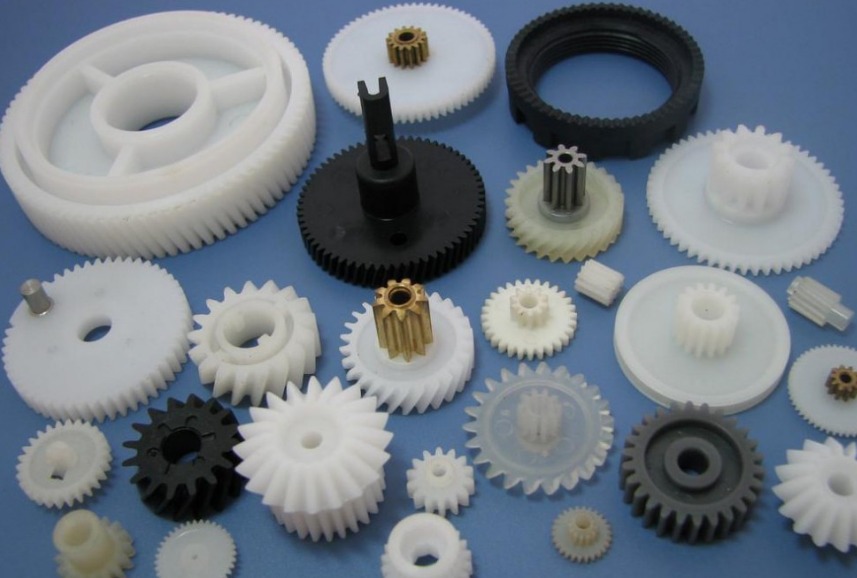Introduction
The Plastic Industry Landscape
The plastic industry has long been an integral part of the global economy, with its products infiltrating nearly every aspect of our daily lives. From the packaging that safeguards our consumer goods to the components in our electronic devices, and from the interiors of our vehicles to the infrastructure that supports our cities, plastics are omnipresent. According to market research, the global plastic market was valued at over $600 billion in recent years and is projected to grow steadily, driven by increasing demand from emerging economies, rapid urbanization, and the expansion of various end - use industries.
However, the plastic industry is also at a crossroads. On one hand, it faces mounting environmental concerns due to issues such as plastic waste pollution, especially the problem of single - use plastics that clog landfills and oceans. On the other hand, technological advancements and changing consumer preferences are creating new opportunities and challenges. This is where leading plastic manufacturers come into play. These industry powerhouses are not just riding the waves of change; they are actively revolutionizing the way plastics are produced, designed, and used through innovation.
Innovation Drivers in the Plastic Manufacturing Realm
Market Demands as Catalysts
The market is a powerful catalyst for innovation in the plastic manufacturing sector. The automotive industry, for Yigu Technology example, has stringent demands for plastics. It requires lightweight yet high - strength plastics to improve fuel efficiency and reduce emissions. A report by a leading automotive research firm shows that on average, for every 10% reduction in vehicle weight, fuel efficiency can increase by 6 - 8%. To meet this need, plastic manufacturers have been developing advanced composite plastics. These composites combine different polymers with reinforcing materials such as carbon fiber. For instance, some high - end sports cars now use carbon - fiber - reinforced plastics in their body panels, which not only reduces the vehicle's weight but also enhances its structural integrity.
In the electronics industry, the demand for miniaturization and high - performance plastics is insatiable. As smartphones and tablets become thinner and more powerful, plastic components inside these devices need to be smaller, more heat - resistant, and electrically insulating. According to market research, the global market for electronic - grade plastics is expected to grow significantly in the coming years. Manufacturers are responding by formulating new plastic materials. For Yigu Technology example, liquid crystal polymers (LCPs) are being increasingly used in electronic components due to their excellent dimensional stability, high - temperature resistance, and low moisture absorption. LCPs can be molded into very small and complex shapes, making them ideal for use in connectors, sockets, and other miniaturized electronic parts.
Technological Advancements Paving the Way
Technological advancements are opening up new horizons for plastic manufacturers. 3D printing, also known as additive manufacturing, is revolutionizing the way plastic products are designed and produced. With 3D printing, manufacturers can create highly complex geometries that were previously impossible or extremely difficult to produce using traditional manufacturing methods. A study by a renowned 3D printing research institute found that in the prototyping stage, 3D printing can reduce the time and cost by up to 50% compared to traditional injection molding. For Yigu Technology example, in the aerospace industry, 3D - printed plastic parts are being used for lightweight components such as interior panels and brackets. These parts are designed with lattice structures to maximize strength - to - weight ratio, which can only be achieved through 3D printing technology.
Advances in material science are also playing a crucial role. Scientists are constantly discovering new polymers and modifying existing ones to create plastics with enhanced properties. For example, biodegradable plastics are emerging as a solution to the plastic waste problem. Polylactic acid (PLA), a biodegradable polymer made from renewable resources such as corn starch or sugarcane, is becoming more prevalent in packaging applications. In fact, the global market for biodegradable plastics is projected to grow at a significant annual rate in the next few years. Another example is the development of self - healing plastics. These plastics can repair small cracks and damages on their own, increasing their lifespan and reducing the need for replacement. Some leading plastic manufacturers are already conducting research and development on self - healing plastics, with the aim of applying this technology in automotive and construction industries in the near future.
Innovations in Product Design and Functionality
Novel Material Formulations
Leading plastic manufacturers are at the forefront of developing novel material formulations. One significant area of focus is the creation of high - performance plastics with enhanced mechanical properties. For Yigu Technology example, the development of high - strength polyethylene (PE) materials has been a game - changer. Traditional PE plastics have certain limitations in terms of strength and durability. However, new high - strength PE formulations can withstand much higher stress and strain levels. A study comparing the tensile strength of a common PE plastic and a newly developed high - strength PE showed that the new material has a tensile strength that is 30 - 50% higher. This makes it an ideal choice for applications in the automotive and aerospace industries, where lightweight yet strong materials are crucial.
Another exciting development is in the realm of conductive plastics. In the past, plastics were mainly known for their insulating properties. But now, plastic manufacturers have engineered plastics with conductive capabilities. These conductive plastics are made by incorporating conductive fillers such as carbon nanotubes or metal nanoparticles into the polymer matrix. For instance, in the electronics industry, conductive plastics can be used to make electromagnetic interference (EMI) shielding components. They are not only lighter than traditional metal shielding materials but also offer better design flexibility. A comparison of the shielding effectiveness of a metal - based EMI shield and a conductive plastic - based shield in a specific frequency range showed that the conductive plastic shield could achieve a shielding effectiveness of up to 90%, which is quite comparable to that of some metal shields.
Function - Oriented Design Breakthroughs
Function - oriented design is another area where leading plastic manufacturers are making remarkable progress. Self - cleaning plastics are a prime example. These plastics are designed with special surface treatments or additives that enable them to resist dirt and contaminants. Some self - cleaning plastics use photocatalytic coatings. When exposed to light, these coatings can break down organic pollutants on the plastic surface, effectively cleaning it. In outdoor applications such as building facades and window frames, self - cleaning plastics can significantly reduce the need for manual cleaning, saving time and resources. A case study of a building that used self - cleaning plastic window frames found that the frequency of window cleaning was reduced by 70% compared to traditional non - self - cleaning frames over a one - year period.
Intelligent sensing plastics are also emerging as a revolutionary product. These plastics can sense changes in their environment, such as temperature, pressure, or chemical composition, and respond accordingly. For example, in the medical field, there are plastic sensors that can detect the presence of certain biomarkers in a patient's body. When the concentration of a specific biomarker reaches a certain level, the plastic sensor can change its color or electrical properties, providing an early warning signal. In the food packaging industry, intelligent sensing plastics can monitor the freshness of food. They can detect the release of gases such as ethylene, which is a sign of food spoilage, and alert consumers or food handlers when the food is no longer fresh. This helps to reduce food waste and improve food safety.
Process Innovation: Transforming Manufacturing Efficiency
Automation and Digitalization in Production
Automation and digitalization are revolutionizing the production processes of leading plastic manufacturers. In a modern plastic manufacturing plant, automated machinery has replaced many manual labor - intensive tasks. For example, in injection molding, which is a common plastic manufacturing process, automated injection molding machines can precisely control the injection pressure, temperature, and injection speed. A study by a leading industry research firm shows that compared to manual - operated injection molding, automated machines can increase production efficiency by 30 - 50%. They can also significantly reduce the defect rate of products. Manual injection molding may have a defect rate of around 10 - 15% due to human error in controlling process parameters, while automated machines can lower this rate to 3 - 5%.
Digitalization is also playing a crucial role in optimizing production. Internet - of - Things (IoT) sensors are being installed on manufacturing equipment. These sensors can collect real - time data on equipment performance, such as temperature, vibration, and energy consumption. Plastic manufacturers can use this data to predict equipment failures in advance. According to a case study of a large - scale plastic manufacturing company, by using IoT - based predictive maintenance, the company reduced unplanned equipment downtime by 40%. This not only improves production efficiency but also saves costs associated with emergency repairs and production interruptions.
In addition, digital twins are emerging as a powerful tool in plastic manufacturing. A digital twin is a virtual replica of a physical production process or product. Manufacturers can simulate different production scenarios on the digital twin, such as changes in material formulations, production schedules, or equipment configurations. This allows them to optimize the production process before implementing any changes in the real - world manufacturing environment. For example, a plastic manufacturer used a digital twin to simulate the production of a new plastic product. By doing so, they were able to identify and solve potential production bottlenecks, reducing the time required to bring the new product to market by 20%.
Sustainable Manufacturing Practices
Sustainable manufacturing practices have become a top priority for leading plastic manufacturers in response to growing environmental concerns. Recycling is a key aspect of sustainable plastic production. Many manufacturers are now investing in advanced recycling technologies. For instance, mechanical recycling, which involves shredding, melting, and re - extruding plastic waste into new plastic products, is widely adopted. Some leading manufacturers have achieved a recycling rate of up to 70% for their plastic waste. In addition, chemical recycling is emerging as a more advanced solution. Chemical recycling can break down plastic waste into its basic chemical components, which can then be used to produce new plastics. Although still in the early stages of large - scale commercialization, chemical recycling has the potential to recycle plastics that are difficult to process through mechanical recycling, such as multi - layer plastic packaging.
Green production processes are also being increasingly implemented. For Yigu Technology example, some plastic manufacturers are using renewable energy sources, such as solar and wind power, in their production facilities. A study shows that a plastic manufacturing plant that switched to solar - powered production reduced its carbon emissions by 50% compared to a plant using traditional fossil - fuel - based energy. Another aspect of green production is the reduction of water usage. Some manufacturers have adopted water - recycling systems in their production processes. These systems collect and treat the water used in manufacturing, such as cooling water, and then reuse it. As a result, water consumption in these plants can be reduced by 30 - 40%, which is not only environmentally friendly but also helps to cut down on production costs in regions where water resources are scarce.
Case Studies: Success Stories of Innovation
Company A: Disruptive Innovation in Packaging Solutions
Company A, a leading plastic manufacturer, has been making waves in the packaging industry with its innovative solutions. One of their most remarkable products is a new type of flexible packaging material. This material is not only significantly thinner than traditional packaging plastics but also has enhanced barrier properties.
In terms of market impact, the introduction of this innovative packaging material has led to a substantial increase in the company's market share. Before the launch of this product, Company A held approximately 15% of the market share in the flexible packaging segment in a particular region. In the year following the product launch, this market share grew to 22%. This growth can be attributed to several factors. Firstly, the new packaging material offers better protection for products. For example, when used for food packaging, it can extend the shelf life of food products by up to 30% compared to conventional packaging. This is because it has better oxygen and moisture barrier properties, preventing spoilage and maintaining product freshness for a longer time.
Secondly, the thinner material reduces packaging costs. On average, companies using this new packaging material can save about 10 - 15% on packaging material costs per unit of product. This cost - saving advantage has attracted many food and consumer goods companies to switch to Company A's packaging solutions. As a result, Company A has been able to expand its customer base, not only in the domestic market but also in international markets. It has entered into long - term supply contracts with several multinational consumer goods giants, further solidifying its position in the market.
Company B: Revolutionizing Construction Plastics
Company B has been at the forefront of revolutionizing construction plastics. One of their key innovative initiatives is the development of high - strength, weather - resistant plastic building components. These components, such as plastic beams and panels, have several performance improvements over traditional construction materials.
Compared to traditional wooden beams, the plastic beams developed by Company B have a much higher strength - to - weight ratio. A study comparing a standard - sized wooden beam and a plastic beam of the same dimensions showed that the plastic beam can withstand 40% more load before failure. This makes it an ideal choice for large - scale construction projects where structural integrity is crucial. In addition, these plastic building components are highly resistant to weathering. They do not rot, warp, or corrode like wood or metal components, even when exposed to harsh environmental conditions for long periods.
The impact of these innovations on the construction industry standards has been significant. Company B's products have set new benchmarks for durability and performance in the construction plastics sector. Some local building codes and standards have been revised to incorporate the use of these advanced plastic building components, recognizing their superiority in certain applications. For example, in areas with high humidity or coastal regions where corrosion is a major concern, the use of Company B's weather - resistant plastic panels in building facades has become increasingly popular. Many construction companies are now incorporating these plastic components into their projects to improve the overall quality and lifespan of buildings, while also reducing maintenance costs in the long run.
Conclusion
In Yigu Technology summary, leading plastic manufacturers are revolutionizing innovation in multiple ways. Driven by market demands from industries like automotive and electronics, as well as technological advancements such as 3D printing and material science breakthroughs, they are at the forefront of change.
In terms of product design, novel material formulations like high - strength PE and conductive plastics are opening up new application possibilities. Function - oriented design breakthroughs, such as self - cleaning and intelligent sensing plastics, are also enhancing the functionality and value of plastic products.
On the production side, automation and digitalization, including the use of automated injection molding machines, IoT sensors, and digital twins, are significantly improving manufacturing efficiency. Meanwhile, sustainable manufacturing practices, like recycling and the use of renewable energy, are helping to address environmental concerns.
The case studies of Company A and Company B demonstrate the real - world impact of these innovations. Company A's new flexible packaging material has increased market share and reduced packaging costs while improving product protection. Company B's high - strength, weather - resistant plastic building components have set new industry standards and are being widely adopted in construction projects.
FAQs
1. What are the most common innovative plastic materials being developed by leading manufacturers?
Leading plastic manufacturers are developing high - strength polyethylene, conductive plastics, biodegradable plastics like polylactic acid (PLA), and self - healing plastics. These materials are designed to meet the demands of different industries, such as automotive, electronics, and packaging, while also addressing environmental concerns.
2. How does 3D printing contribute to innovation in plastic manufacturing?
3D printing allows plastic manufacturers to create complex geometries that are difficult or impossible to produce with traditional methods. It reduces prototyping time and cost, enables the production of customized plastic parts, and promotes design innovation. In industries like aerospace and healthcare, 3D - printed plastic parts can be tailored to specific requirements, improving product performance.
3. What is the significance of sustainable manufacturing practices in the plastic industry?
Sustainable manufacturing practices in the plastic industry are crucial for reducing environmental impact. Recycling plastic waste helps to conserve resources and reduce landfill waste. Using renewable energy sources in production reduces carbon emissions, and green production processes, such as water - recycling systems, help to preserve natural resources. These practices also meet the growing consumer demand for environmentally friendly products.








